IN THE NEWS •
IN THE NEWS •
STAY UP TO DATE WITH CHRISTOPHER REMMERS
CONNECT WITH CHRISTOPHER TODAY FOR AN INTERVIEW OR APPEARANCE TODAY
The Creative Endeavor - Will A.I help art?
Andrew Tischler interviews Christopher Remmers in this episode of #TheCreativeEndeavour, a show focused on inspiring stories from creative professionals from around the world and taking a deep dive together into the creative world of being a fine artist.
The Bold Brush Show - Ep. 34 The Battle Against Entropy
“In this episode of The BoldBrush Show (formerly the BoldBrush podcast), we welcome visionary artist Christopher Remmers for an exploration of entropy, creativity, and personal growth. Drawing on concepts of evolution, chaos, and resilience, Christopher provides fascinating insights into how these elements intertwine with the artistic process.”
The Creative Endeavor - Ep. #55 Finding YOUR Connection to Beauty!
Andrew Tischler interviews Christopher Remmers in this episode of #TheCreativeEndeavour, a show focused on inspiring stories from creative professionals from around the world and taking a deep dive together into the creative world of being a fine artist.
Interview with Megha Lillywhite - Magical Realism in the Digital Age
Megha Lillywhite interviews Christopher Remmers on her YouTube channel to discuss embracing magical realism within the digital age.
Fine Art Connoisseur - Evolving the Myth
In Denver, Abend Gallery is presenting an exhibition of recent easel-sized paintings by two gifted artists based in Seattle, Tenaya Sims and Christopher Remmers. On view through March 25, their show’s title, Evolving the Myth: Portals of Perception, points to the laudable long-term ambition both men harbor — to prove that today’s highly skilled realists have what it takes to create epic narrative paintings that tap into myth and legend in fresh ways and excite the imaginations of modern viewers.
-
This objective was cherished by many artists until the mid-20th century, when other approaches eclipsed realism. It is only now becoming attainable again thanks to the robust revival of technical skills over the past 30 years. Interestingly, the passion that now drives these two colleagues originated not in the world of fine art, but in the fields of video game design (Sims) and spatial design (Remmers).
Tenaya Sims (b. 1978) began his career working in the video games industry, then stepped away to earn a B.F.A. from Carnegie Mellon University in Pittsburgh. After a few more years in gaming, he dedicated five years to full-time study of classical drawing and painting. He started with a year at the atelier operated by Jeffrey Watts in Encinitas, California, then four years with Juliette Aristides at her atelier within Seattle’s Gage Academy of Art. In 2008, Sims founded his own Georgetown Atelier, ultimately merging it into Gage eight years later.
Today Georgetown offers a full-time, three-year curriculum in classical realism that also, quite unusually, recognizes the critical role that imaginative realism plays within the classics. When he is not teaching, Sims paints and draws epic narratives and “exo scapes” (enchanted, geologically active landscape scenes) that have been rewarded with honors in the flourishing world of imaginative realism (e.g., the organization IX Arts) and the Art Renewal Center (ARC); in fact, he won Best in Show in ARC’s 12th International Salon Competition.
Four years younger, Christopher Remmers (b. 1982) enjoyed a decade of success creating immersive spaces through his own contracting company, Eden Building and Design. Having studied fine art independently and in workshops nationwide, he finally closed his business to spend a year in California with Virgil Elliott, author of Traditional Oil Painting, then pursue a six-month online mentorship with the Montana-based figurative master Steve Huston.
Next, Remmers plunged into the three-year program at Georgetown Atelier, and he has been a key member of its teaching staff since 2018. He too has been honored in ARC’s International Salon Competition, most recently in 2020 with 3rd Place in the imaginative realism category.
UNITY IN PURPOSE
One thing that connects the two men is, of course, their belief in Georgetown’s curriculum, which makes room for both a high degree of finish and loose, expressive brushwork. Students begin by working observationally (including life models) as they learn such core subjects as constructive anatomy, value studies, perspective, and cast drawing. Next they move into the realm of invention, pursuing modules such as the “rock project”: first they draw a rock from observation by studying its visual properties (e.g., planar vs. round.). Then they draw a rock from imagination, informed by their studies of the real rock. Georgetown’s curriculum has three phases you would expect to find there (Drawing, Painting I, and Painting II), and a final one you might not. In Professional Development, students are mentored by their instructors to build a cohesive body of work while also cultivating the “inner vision” that will ultimately distinguish them from everyone else who has learned the same technical skills they have.
Sims and Remmers are also united by their desire to stop viewers in their tracks with complex paintings that touch upon ageless human concerns. An avid reader of Carl Jung (1875–1961), the great Swiss investigator of archetypes and the unconscious mind, Remmers writes, “For as long as I can remember, I have felt deeply inspired by the grand narrative paintings of our past, as well as the great mythologies that were the impetus for their creation. How are we as artists to participate in the evolution of these universal mythologies of the human condition? How can we use these expressions as mirrors for a deeper understanding of creativity?” Fortunately, Remmers can answer his own questions: “My work is endeavoring toward the texture, fluidity, and grandness that I have always admired in great traditional painters from Baroque to Mannerist to Impressionist and beyond. I look for the bridges in technique as well as narrative.” And, quite rightly for someone who is not yet 40, his questioning goes on: “How can I meld mythological narratives with modern themes of psychedelia and mysticism to convey their universality? How can I fuse realism with abstraction until the two can better convey our evolved story? Every painting is a question answered in the process and in the viewing. Evolving our collective mythology in my work is of the utmost importance.”
All of this helps to explain why Remmers and Sims have titled their Abend show Evolving the Myth, but it’s useful to know this is also the title of a remarkable long-term initiative they are busy planning. The artists note that, every year, millions of people are inspired to travel far in order to experience grand narrative artworks displayed in museums, cathedrals, and other grand buildings. Think, for example, of the Vatican, where Raphael’s School of Athens measures 16 by 25 feet; or Rembrandt’s Night Watch (12 by 14 feet) at the Rijksmuseum, or the Louvre’s Liberty Leading the People painted by Delacroix. Perhaps most ambitious is Mucha’s unforgettable Slav Epic — 20 monumental canvases made between 1910 and 1928 that will someday be exhibited together in Prague. Sims and Remmers underscore that it is not just the picture tourists come to see; it is the experience of seeing that artwork in its unique space that matters, too. “The impact of these mural-sized paintings,” they argue, “is surely amplified by, and inseparable from, the epic surroundings within which they are displayed.” Notice that none of the examples above is contemporary, even though we now have thousands of well-trained realists able to produce such ambitious scenes. Why is that exactly? Remmers and Sims point to a range of factors, including a lack of suitable venues, the expense and logistical challenges involved, and the endless hamster-wheel artists must run to produce smaller works that keep their rent paid and their children clothed. Getting our field to the next level is daunting, but in this era of more-moneythan-we-know-what-to-do-with (some folks in our society are richer than anyone in world history has ever been), the fact that the leap has not occurred yet is frustrating. Sims and Remmers rightly note that too many contemporary realist images display skill alone, without the meaning, story, myth, or symbolism we viewers actually crave. By contrast, I would add, streaming television programming is enjoying a golden age because much of it is well crafted and satisfying on deeper levels, too.
STAY TUNED
It would unfairly distract attention from the artists’ current show to reveal here any more of their grand plans, but suffice it to say that they envision creating a cycle of epic paintings to be displayed within immersive environments that will make subtle use of light projections, ambient sound, and interactive educational elements to help viewers “journey into and beyond the artworks.” Fundraising and location-scouting are now underway, and Sims and Remmers encourage anyone interested in learning more to contact them via their websites. Fine Art Connoisseur congratulates them and Abend Gallery on their good work and promises to shine more light on Evolving the Myth as it continues taking shape.
The Creative Endeavor - Ep. #41 Inside the MIND of a Creative POWERHOUSE
Andrew Tischler interviews Christopher Remmers in this episode of #TheCreativeEndeavour, a show focused on inspiring stories from creative professionals from around the world and taking a deep dive together into the creative world of being a fine artist.







